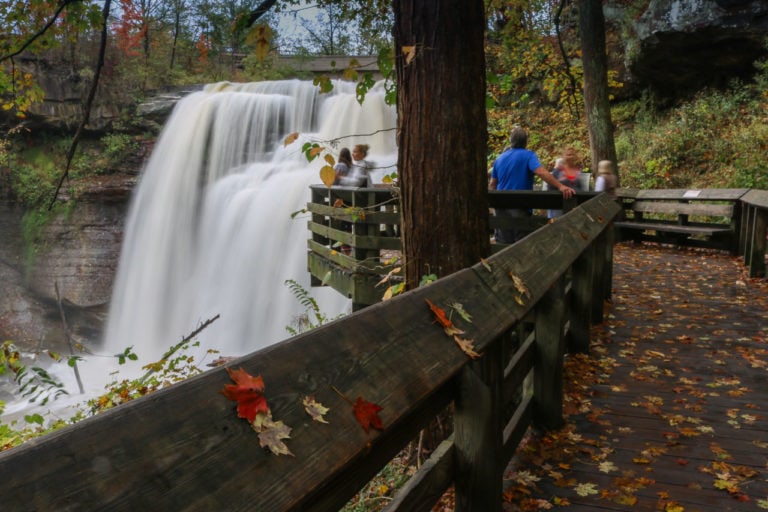13 Best National Parks for Winter Wonderlands
It may be the season when trees go dormant, bears hibernate and people cozy up near fireplaces, but winter also provides some amazing opportunities for outdoor fun.
If you’re up for a snowy adventure, America’s national parks offer everything from winter wonderlands and wildlife viewing to winter hiking, cross-country skiing and other activities.
13 Best U.S. National Parks to Visit in Winter
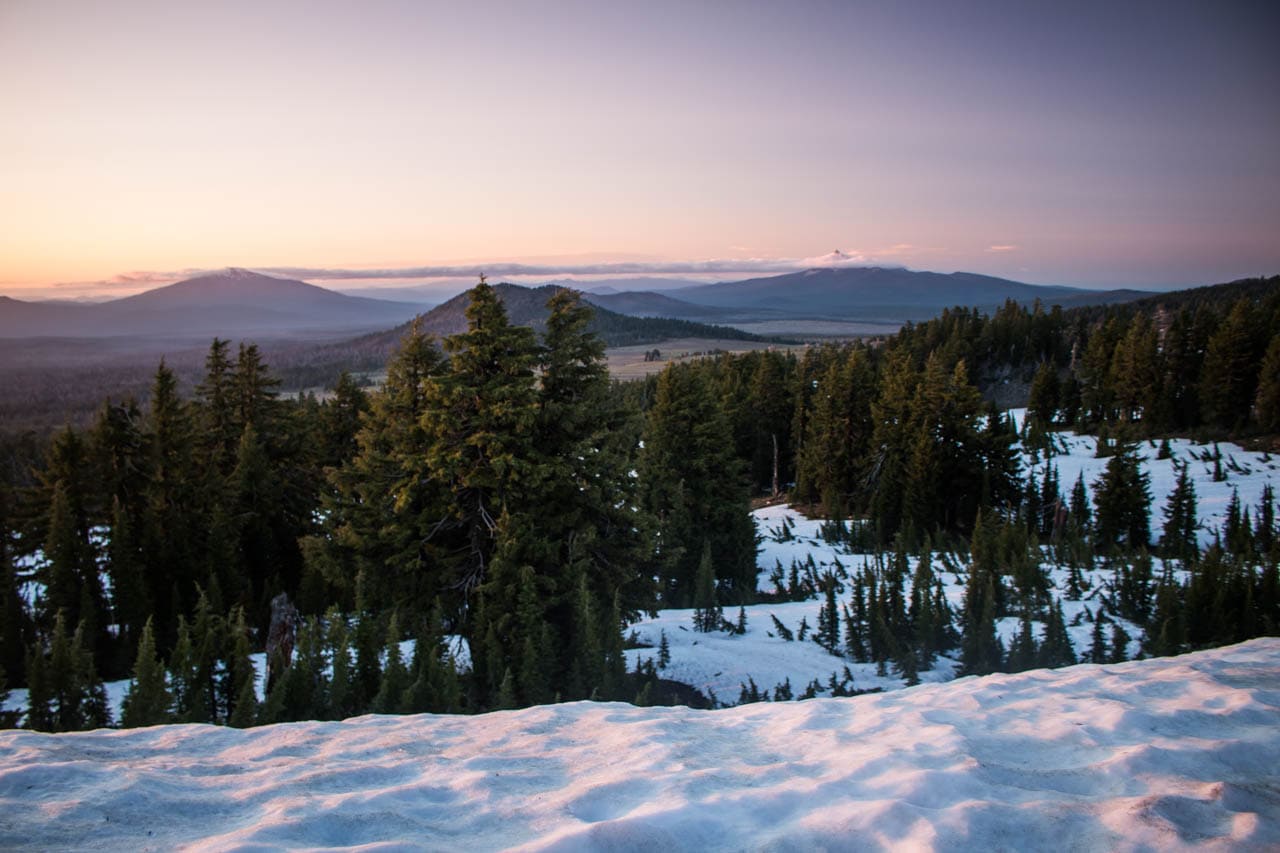
The following national parks to visit in winter are perfect destinations to break away from that cabin fever.
During the coldest months of the year, they feature snow-covered trees, frozen lakes and tranquil landscapes.
From December through February, or often much longer, these awesome winter national parks are oases of peace and quiet—especially compared with the sometimes frantically crowded summers.
So, whether you’re after a snowshoeing adventure or just a scenic winter wonderland drive, these are the best national park for winter trips.
This best national parks to visit in winter post contains affiliate links. You can read more about our Terms of Use / Disclosure here.
Acadia National Park, Maine

After the magnificent fall colors have subsided and the leaf-peeping crowds are gone, Maine’s Acadia National Park turns into a paradise of peace.
While the waves keep on crashing against the park’s rocky shores, Acadia’s trails and roads are all but empty in winter.
If you’re after some serious solitude, a visit to Acadia National Park in January or February is definitely worth considering. There are still plenty of outdoor activities to do in Acadia in the winter months, though.
Base yourself in charming Bar Harbor and go for scenic drives, cross-country skiing or snowshoeing on the many miles of carriage roads, enjoy some ice fishing, and go on snowmobiling trips.
Arches National Park, Utah
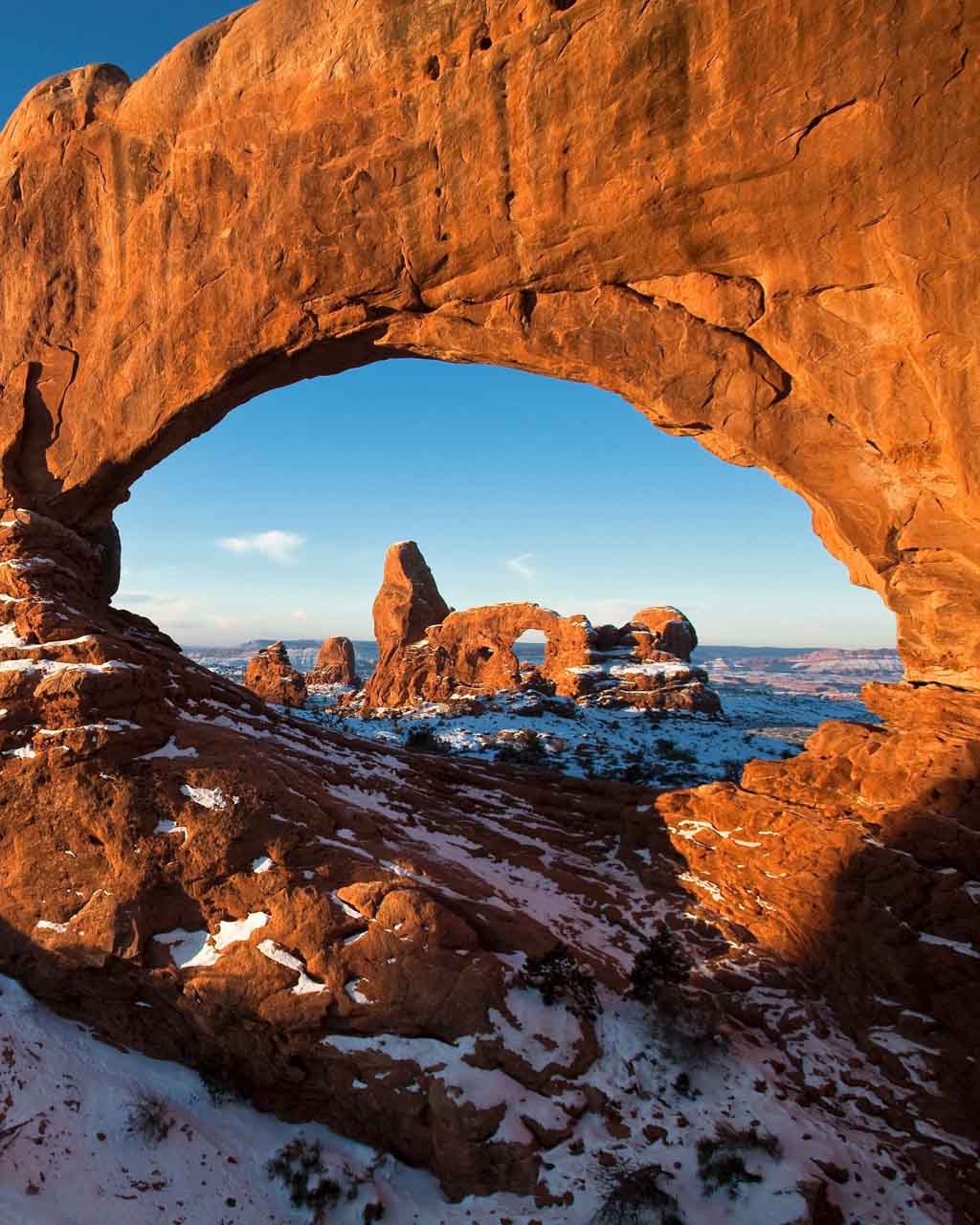
The red rocks of Arches National Park contrast majestically with the whiteness of the snow that it occasionally gets. And when the skies clear after a snowstorm, the blue skies complete the park’s “American flag” color palette in winter.
However, it’s quite possible that roads and trails in Arches are closed following heavy snowfall.
Plan well and plan ahead when visiting Arches National Park in winter. Nearby Moab has plenty of accommodation options.
Bryce Canyon National Park, Utah
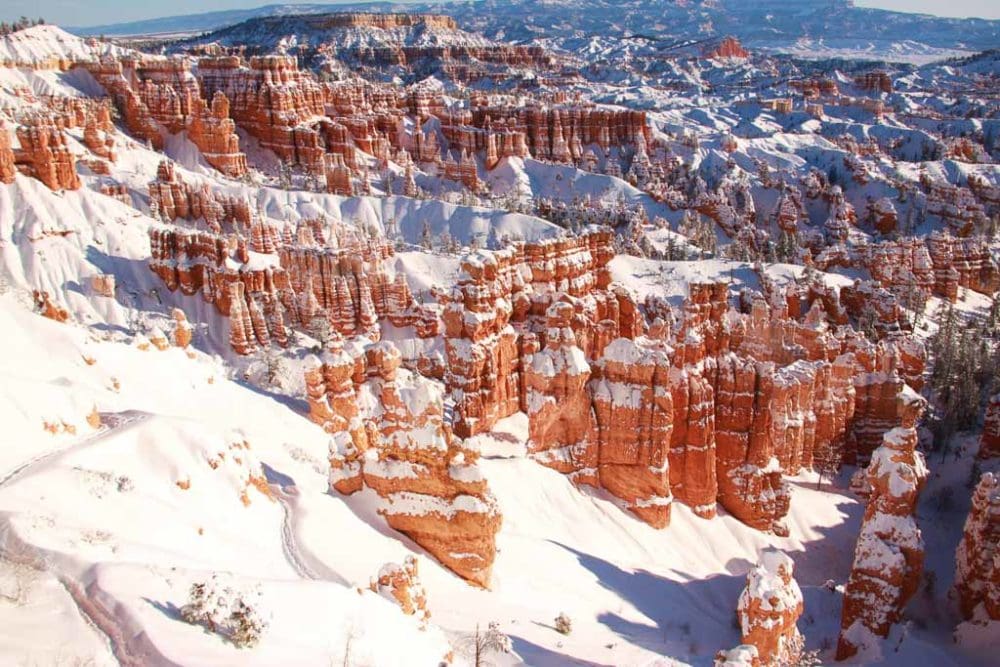
Undoubtedly one of the best national parks to visit in the winter, Bryce Canyon National Park’s high elevation results in cold and dry air, regular snowfall and beautiful star-studded night skies. In winter, this is one of the absolute best parks for snowshoeing.
The park’s remarkable hoodoo landscape is even more extraordinary when it contrasts with snowy whites and icy blues.
Several winter activity programs are available at Bryce Canyon, but remember that you’ll need traction devices and snow boots.
Crater Lake National Park, Oregon
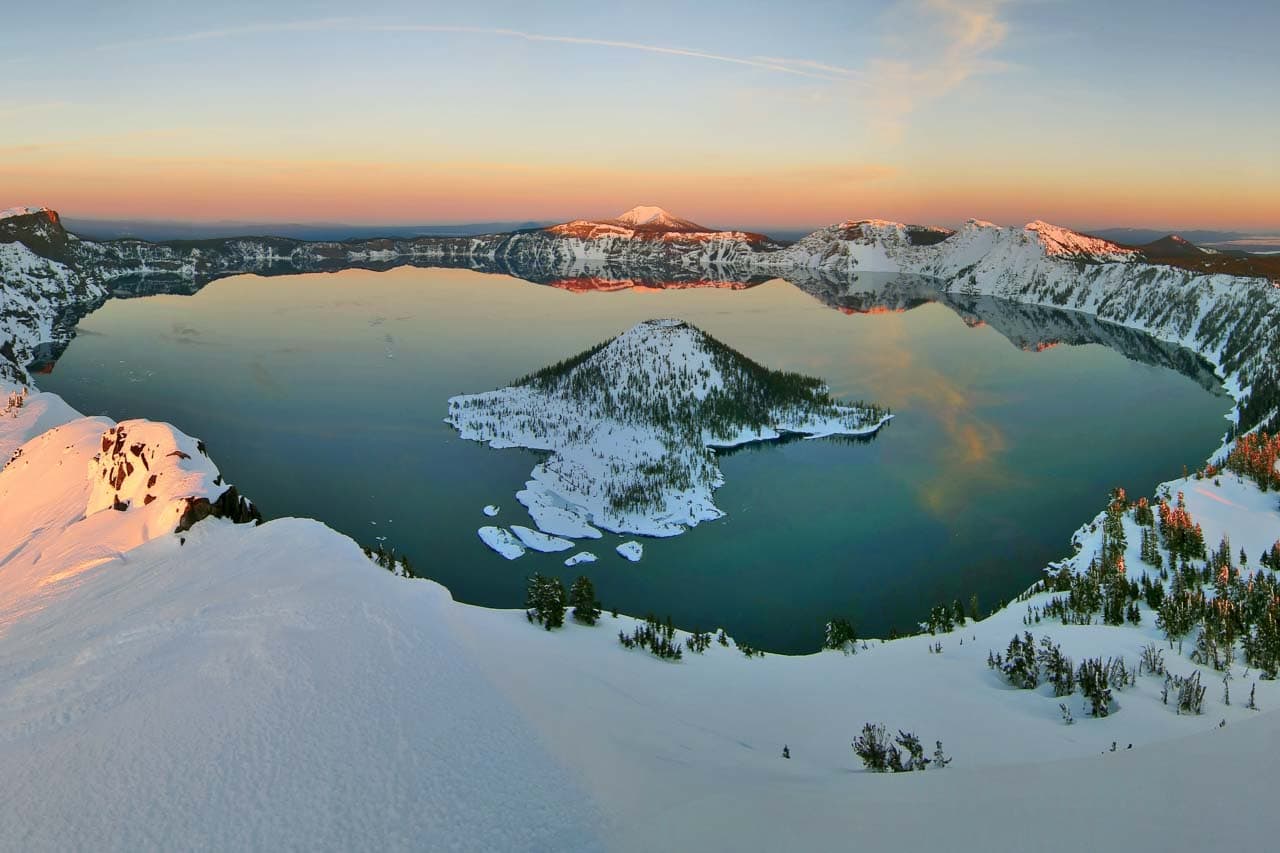
Oregon’s Crater Lake depends on precipitation as its water supply. Without rain or snow, the lake would not exist. And yes, it does get a lot of snow.
In fact, due to its high altitude and location near the Pacific Ocean, the average annual snowfall in Crater Lake National Park is no fewer than 43 feet (13 meters).
A thick layer of snow is guaranteed in this national park in winter. Note, however, that the Rim Drive, one of America’s best national park drives, is closed to vehicles in winter.
It’s open for snowshoeing and cross-country skiing, though. Downhill skiing and snowboarding are also allowed in Crater Lake National Park, but not within the caldera.
Although the North Entrance is closed, the South Entrance remains open to vehicle traffic all year, so you’ll still be able to get close to the crater rim.
Denali National Park, Alaska
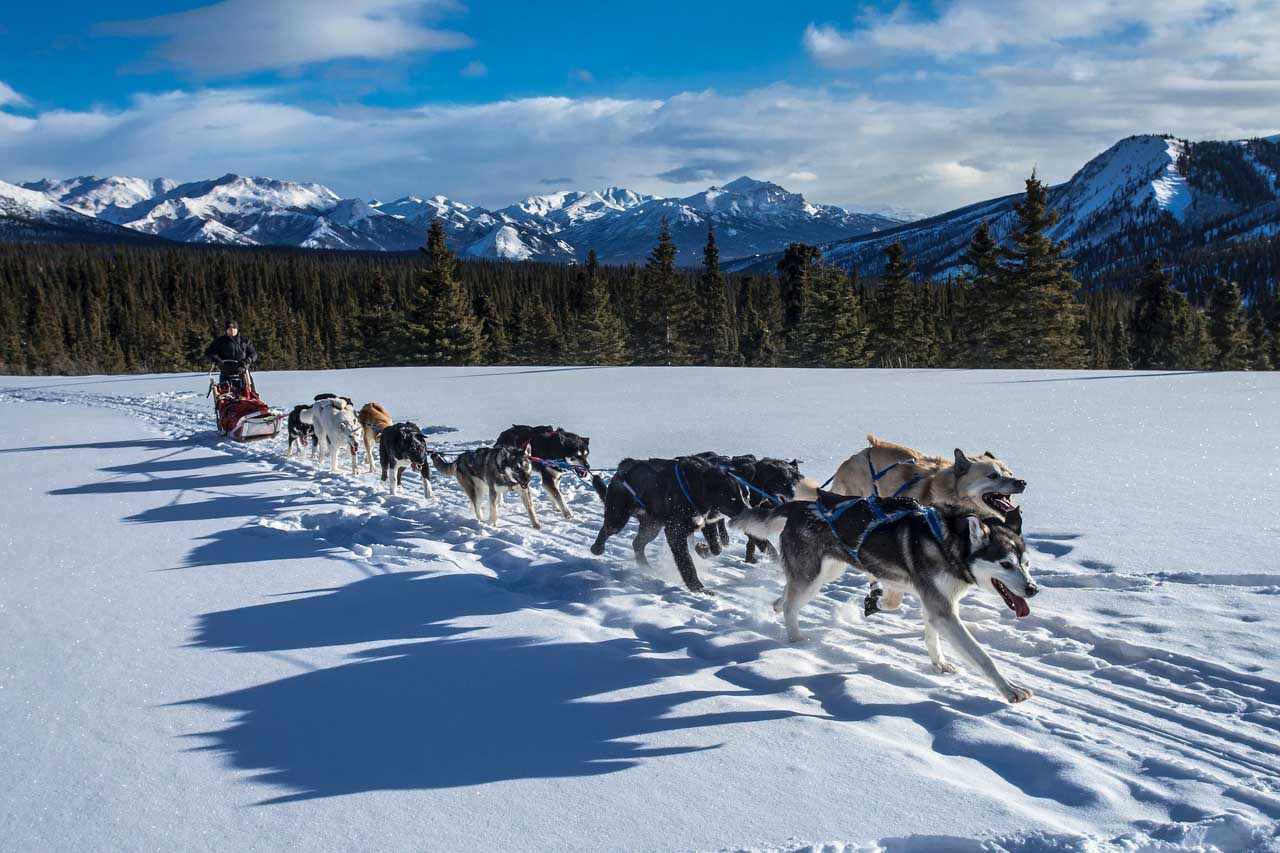
Alaska may seem like a daunting destination in winter, but it’s also nothing short of spectacular. And the epitome of all things Alaska—wilderness and wide landscapes, dramatic mountains and iconic Alaska wildlife—is Denali National Park.
Easily accessed from Anchorage, the park, which is open year-round, is centered on Denali, North America’s highest mountain.
Six million acres of wilderness beckon the adventurous, who relish the opportunity to fully experience the power of winter.
Although the days may be extremely short (no longer than five hours in late-December), there’s still plenty of time to explore the park.
Your options for winter adventures in Denali National Park range from ranger-led walks to mushing and epic winter camping. In February, there’s even a Denali Winterfest! Additionally, Denali is also the best national park to see the Northern Lights in the U.S.
A huge perk of visiting Denali National Park in winter are periodic Aurora Borealis sightings, so make sure to look up at night.
Grand Teton National Park, Wyoming
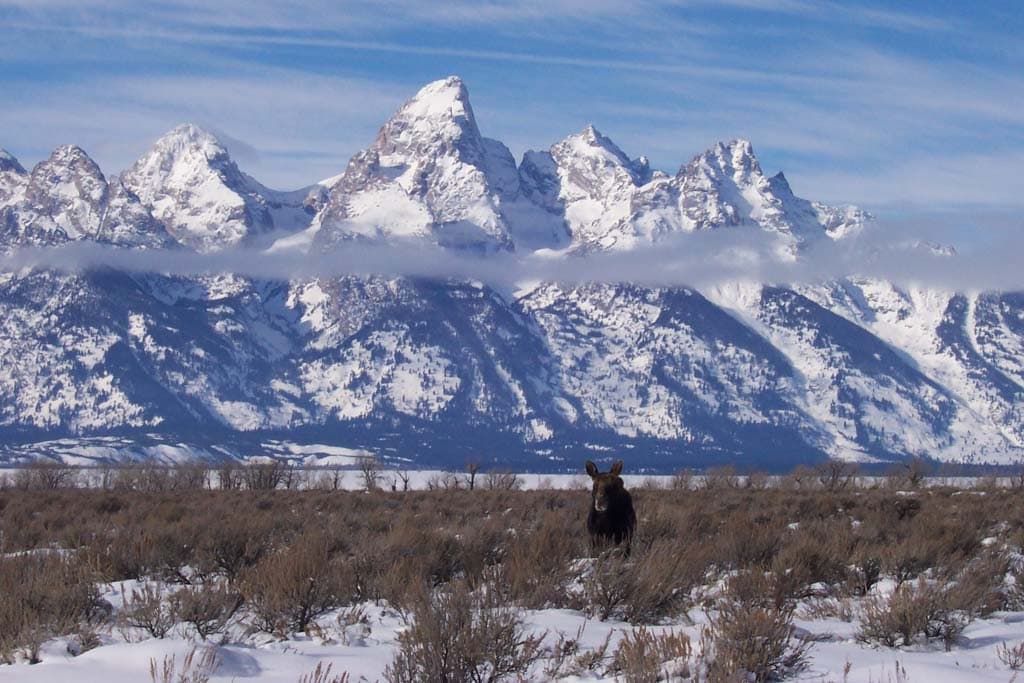
From November through March, a blanket of snow covers the jagged peaks, woodlands and wide valleys of Grand Teton National Park. The park’s winter trails run through still landscapes, attracting winter sports enthusiasts of all kinds.
The two main roads in the park—Highway 89/191 and Highway 26/287—are plowed throughout the winter season and open to vehicle traffic. Note that they may still be covered in snow and ice, though, so be prepared and careful.
The scenic Teton Park Road, on the other hand, is closed to vehicles, but open to other, non-motorized traffic. It’s the perfect place for snowshoeing and cross-country skiing, offering magnificent views and great wildlife viewing opportunities.
Grand Teton National Park’s epic landscapes and wonderful winter trails make it one of best national parks to visit in winter.
Lassen Volcanic National Park, California
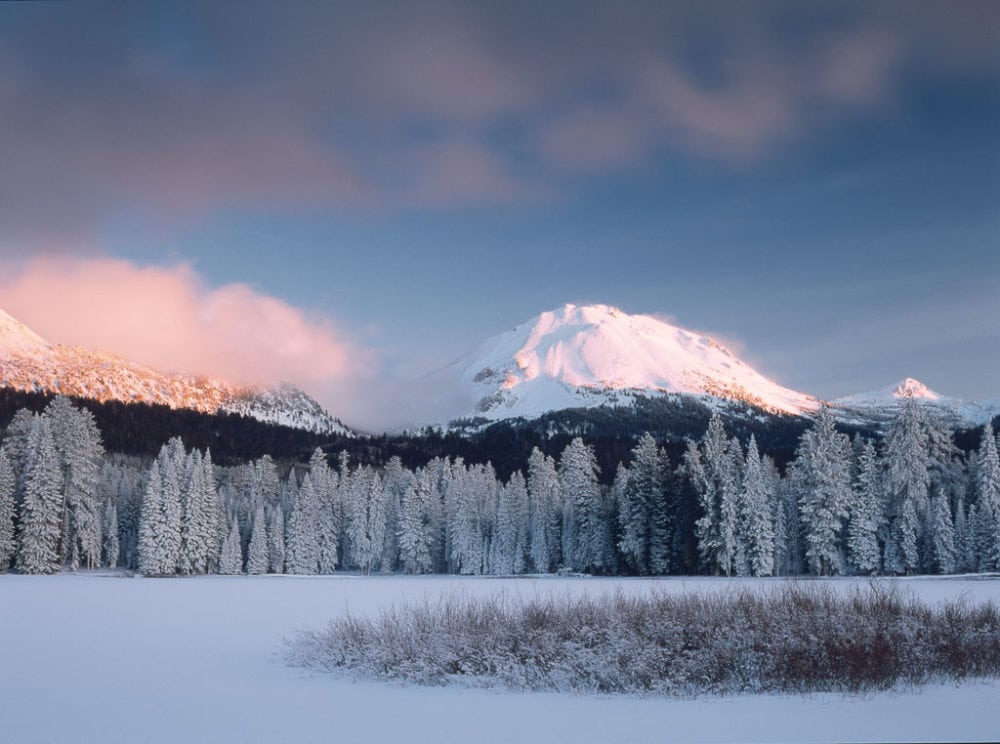
One of America’s less-visited national parks, Lassen Volcanic National Park in northern California is also among the best national parks in winter.
In this beautiful park, winter extends from October through May. Snow covers Lassen for more than six months each year, making for one of the longest winter sports seasons in the national parks of the U.S.
The main highway through the park does close during winter, but luckily, the Manzanita Lake and Southwest areas remain open through the year.
Few facilities are open, though, so you should come prepared. Fill up your gas tank, bring plenty of food and water, tire chains and extra clothing.
Consider leaving your pet at home, too—pets aren’t allowed on trails or snow-covered routes and roads.
Lassen Volcanic offers many different winter activities. From sledding and tubing to cross-country skiing, snowshoeing and backcountry snowboarding, this amazing winter wonderland can be explored and enjoyed in various ways.
Additionally, Lassen’s Southwest Walk-in Campground is open through the year, too, making this one of the best national parks for winter camping.
Mount Rainier National Park, Washington
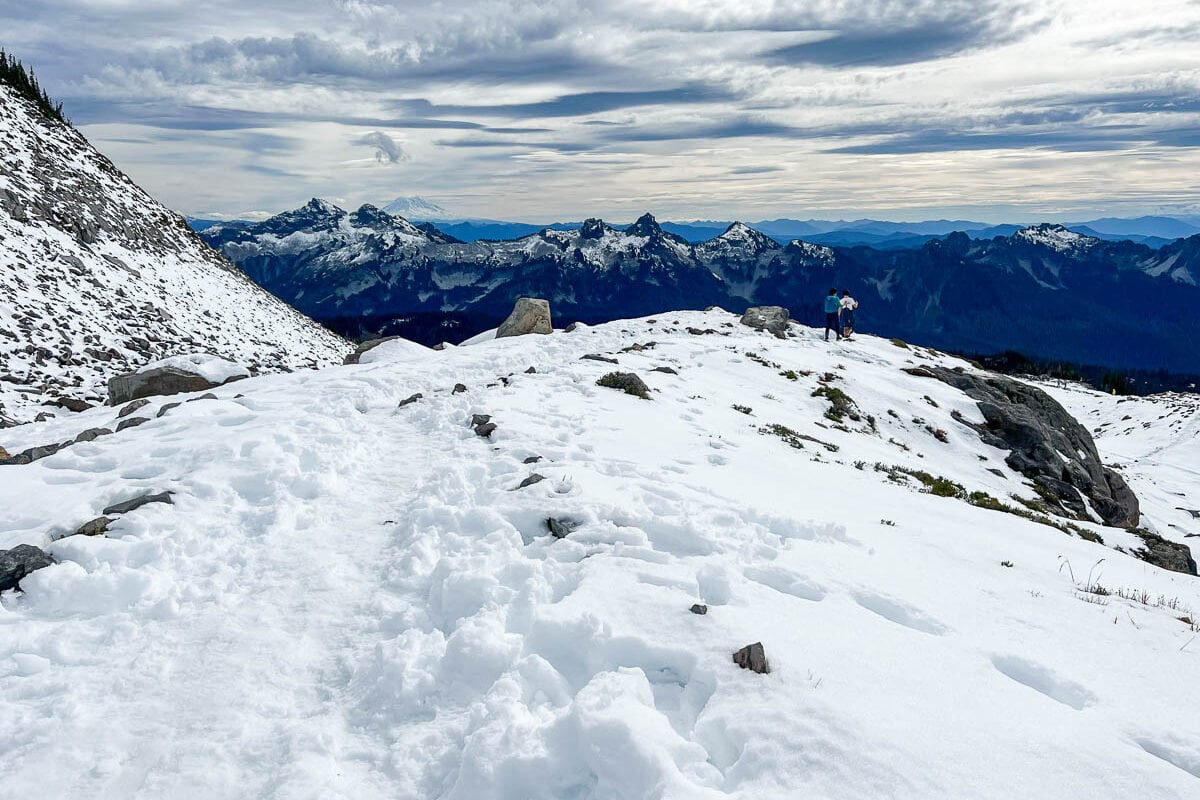
Glaciers are among Mount Rainier National Park’s key features throughout the year, a park dominated by towering mountain ranges and one massive volcano—Mount Rainier itself.
Because of the high elevation of the park, snow is actually abundant during most of the year. During the short summer season, snowmelt feeds streams and thundering waterfalls, while wildflowers paint meadows in gorgeous colors.
Come late-October, snow begins to carpet those meadows once again, starting high in the mountains, slowly making its way down until all is covered in a thick white blanket.
Located a short drive south of Seattle or within easy reach from Portland, Oregon, this is one of the most spectacular destinations in the Pacific Northwest for winter outdoor activities, which include skiing and snowboarding, winter camping, sledding and snowshoeing.
Mount Rainier is easily one of the best national parks to visit in winter.
Remember, though, that at least 5 feet (1.5 meters) of snow is required to allow snowshoeing and other winter sports. This is necessary to ensure that the underlying vegetation isn’t damaged.
Olympic National Park, Washington

While winter is the misty wet season in Olympic National Park’s Quinault and Hoh Rain Forests, the higher elevations along Hurricane Ridge receive a thick layer of snow.
Hurricane Ridge is Olympic’s winter sports center, offering a plethora of opportunities to go snowboarding, downhill skiing, snowshoeing, cross-country skiing and tubing.
This abundance of outdoor activities is why Olympic is one of the best Washington national parks to visit in winter.
When the weather permits, the spectacular Hurricane Ridge Road is open to uphill vehicle traffic from 9 a.m. to 4 p.m. on Friday, Saturday and Sunday in winter. All vehicles have to be back down past the Heart O’ the Hills Entrance by 5 p.m. You also must have tire chains in your vehicle.
Because Hurricane Ridge is also open during the winter holidays, from December 24 through New Year’s Day (closed on Christmas Day, though!), Olympic is one of the best national parks to visit in December. Check this page for actual opening times and road conditions.
Additionally, Olympic National Park’s Pacific Coast is at its wildest in winter. Heavy rains, strong winds and tides create huge swells and massive waves.
While the Olympic coast is usually snow-free—no winter wonderland here—it is still an absolutely spectacular place to visit during winter. Those winter waves are awesome!
Rocky Mountain National Park, Colorado
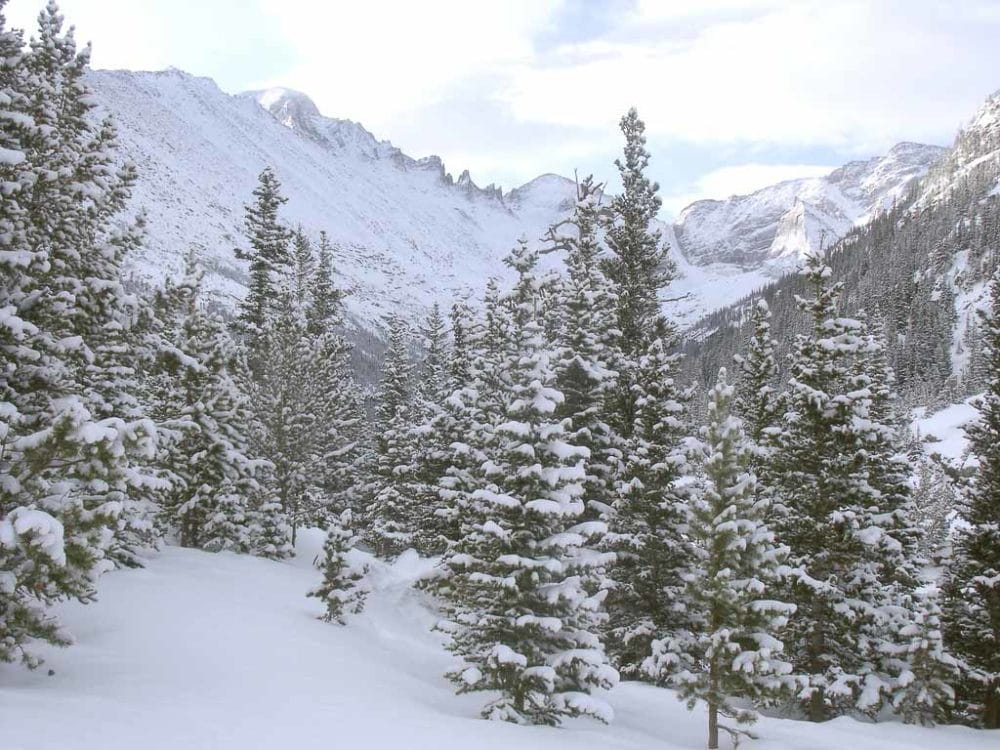
Colorado’s Rocky Mountains are among America’s best places for hiking and camping in summer, but winter, too, has lots to offer in this mountainous park.
Most trails remain open throughout the year. So, strap on a pair of waterproof boots and snowshoes, grab a couple of hiking poles and head out for a winter wonderland adventure.
The Rockies are stunning in winter. Their sharp peaks covered in snow, their dense forests basking in quietness, this is one of the most scenic and best national parks in winter.
When it comes to wildlife watching in Rocky Mountain National Park, too, winter is arguably the best season to do so.
Animals find less cover in leafless forests and snow’s whiteness makes them stand out even more. This is a wonderful time of year to spot large mammals, such as moose, elk, mule deer and coyotes.
Shenandoah National Park, Virginia
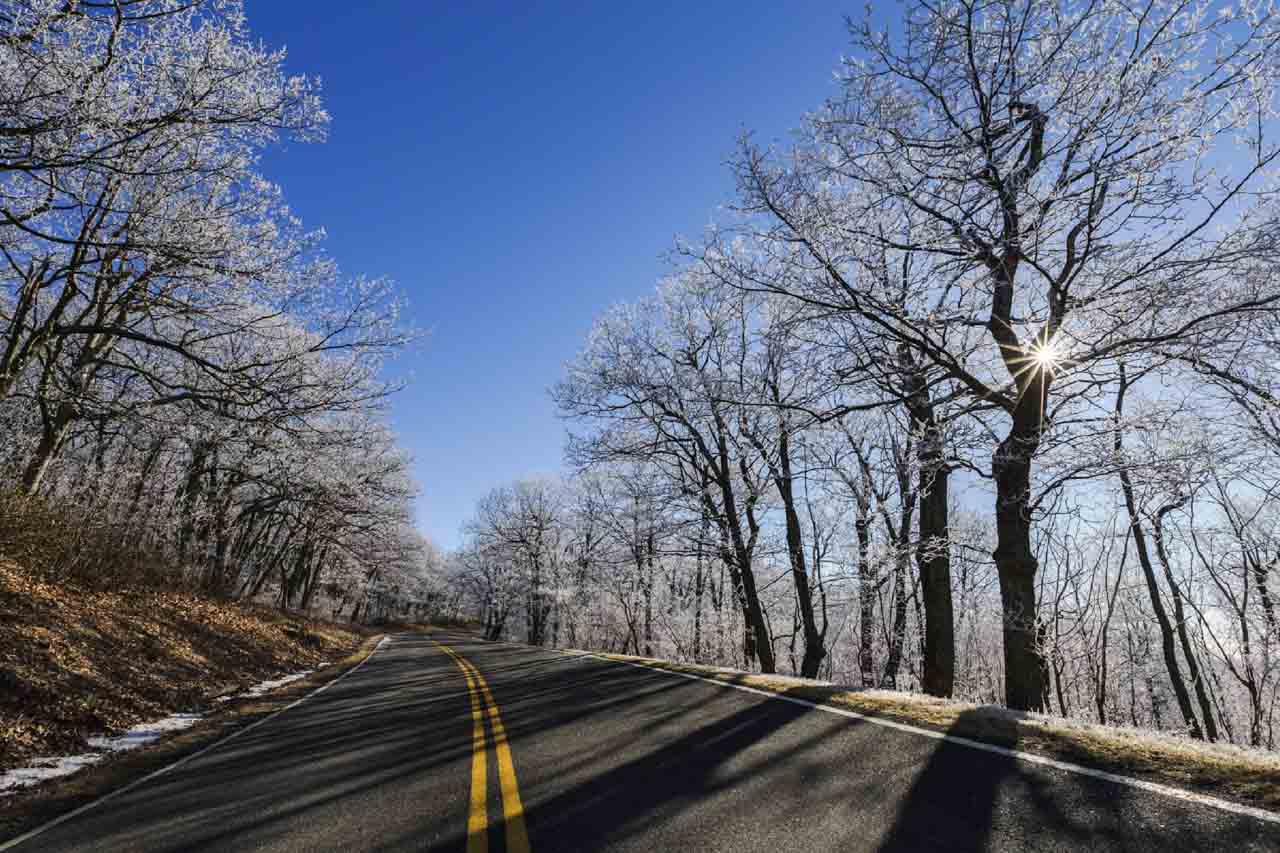
Once the fall foliage has disappeared from the Blue Ridge Mountains, Shenandoah National Park in central Virginia quiets down.
The park’s numerous black bears hole up for hibernation, while migratory birds have long left for warmer destinations.
Other wildlife stays put, though, and are much more visible in winter. Often-seen animals in Shenandoah National Park in winter include turkeys, white-tailed deer, foxes and even bobcats.
Countless winter birds are present, too, from nuthatches and chickadees to several woodpecker species.
After a snowstorm, a drive on Shenandoah’s scenic Skyline Drive is magnificent. Views of the rolling Blue Ridge and Shenandoah Valley down below are spectacular when covered with a layer of snow.
Note, however, that Skyline Drive does occasionally close to traffic when there’s been heavy snowfall. Check road conditions and plan ahead.
Yellowstone National Park, Wyoming, Idaho and Montana
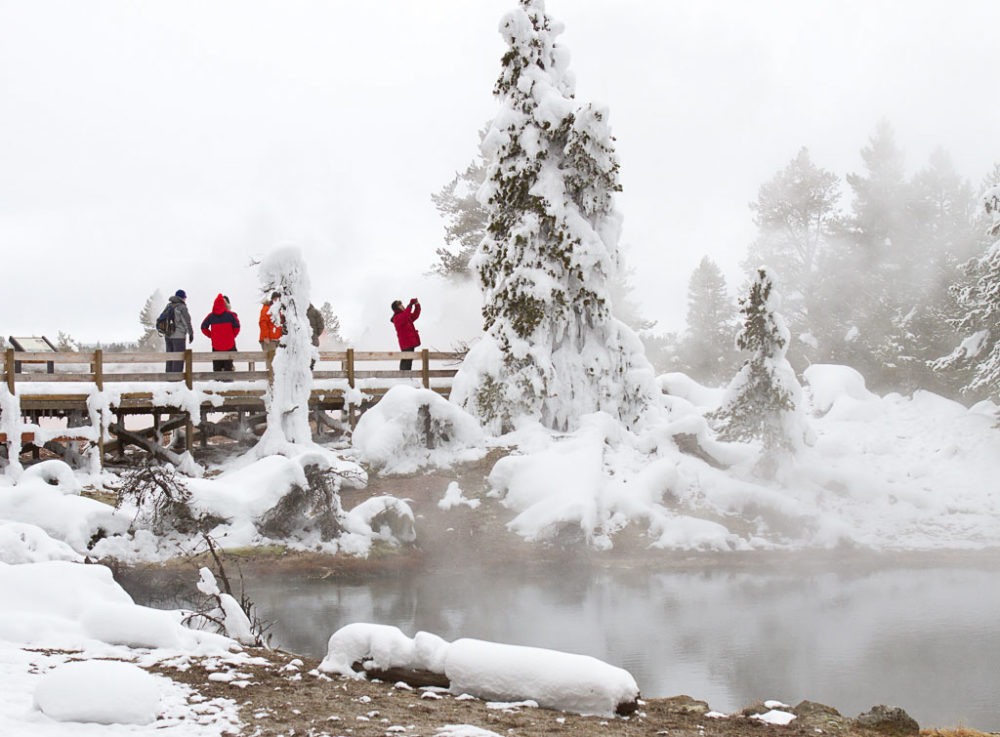
One of the world’s truly great national parks—and the oldest one—, Yellowstone National Park is one of the best parks for wildlife watching in winter.
Blizzards and bone-chilling temperatures thin the crowds, while at the same time steaming geysers and hot springs offer some welcoming warmth to wild animals, who flock to the area in mass numbers.
Park roads close in November in preparation for winter. Restricted vehicle access means that visiting Yellowstone in winter involves parking at an entrance and taking a snowcoach or snowmobile further into the park.
Once in the park, you’re free to snowshoe on basically all trails.
If you venture into the backcountry, it’s critical to be aware of your surroundings. Yellowstone is wild and can be dangerous year-round, but winter ups the challenge a bit more.
Ice might cover hydrothermal vents, avalanches are not uncommon, and wildlife can be unpredictable.
Grizzly bears are hibernating, but there are still lots of bison around. Other large animals that can be seen in Yellowstone’s winter wonderlands include moose, elk and gray wolves. You can also see iconic trumpeter swans in the park’s rivers and lakes.
Be aware, be prepared, but most of all: enjoy!
Yosemite National Park, California
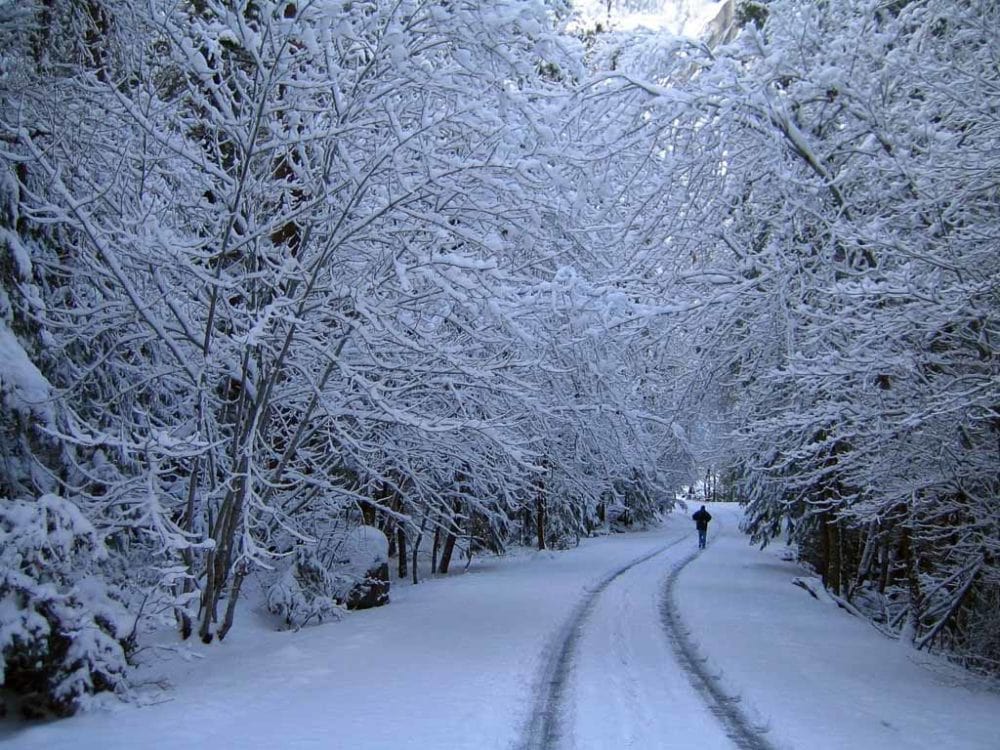
It may be beautiful in spring and summer, and absolutely amazing in the fall, but Yosemite National Park doesn’t shed any of its beauty in winter. In fact, it’s winter that brings out the wildness of this landscape even more.
Waterfalls grow icicles, mountain streams freeze, fog floats through valleys, and snow dusts summits. If you’re looking for the best national parks to visit in winter, Yosemite’s winter wonderland is unlike any other in America.
Yosemite Valley, the park’s centerpiece and tourist hub, might generally not have enough snow for snowshoeing or skiing, but there are other areas that do.
Focus on Glacier Point Road and the Crane Flat Area and you’ll find several marked trails running through beautiful winter landscapes.
Additionally, the park also offers various other winter sports, from snow tubing and sledding to ice skating, snowboarding and downhill skiing.
A great place to base yourself in winter is The Ahwahnee Hotel, a grand and romantic national park lodge that’s open all year.
Best National Parks by Month
Check out the following blog posts for the best national parks to visit in each specific month:
- January: Best National Parks to Visit in January
- February: Best National Parks to Visit in February
- March: Best National Parks to Visit in March
- December: Best National Parks to Visit in December
This is a brand new series I’ve started, so the list will be expanded as I publish new blog posts for each month.

